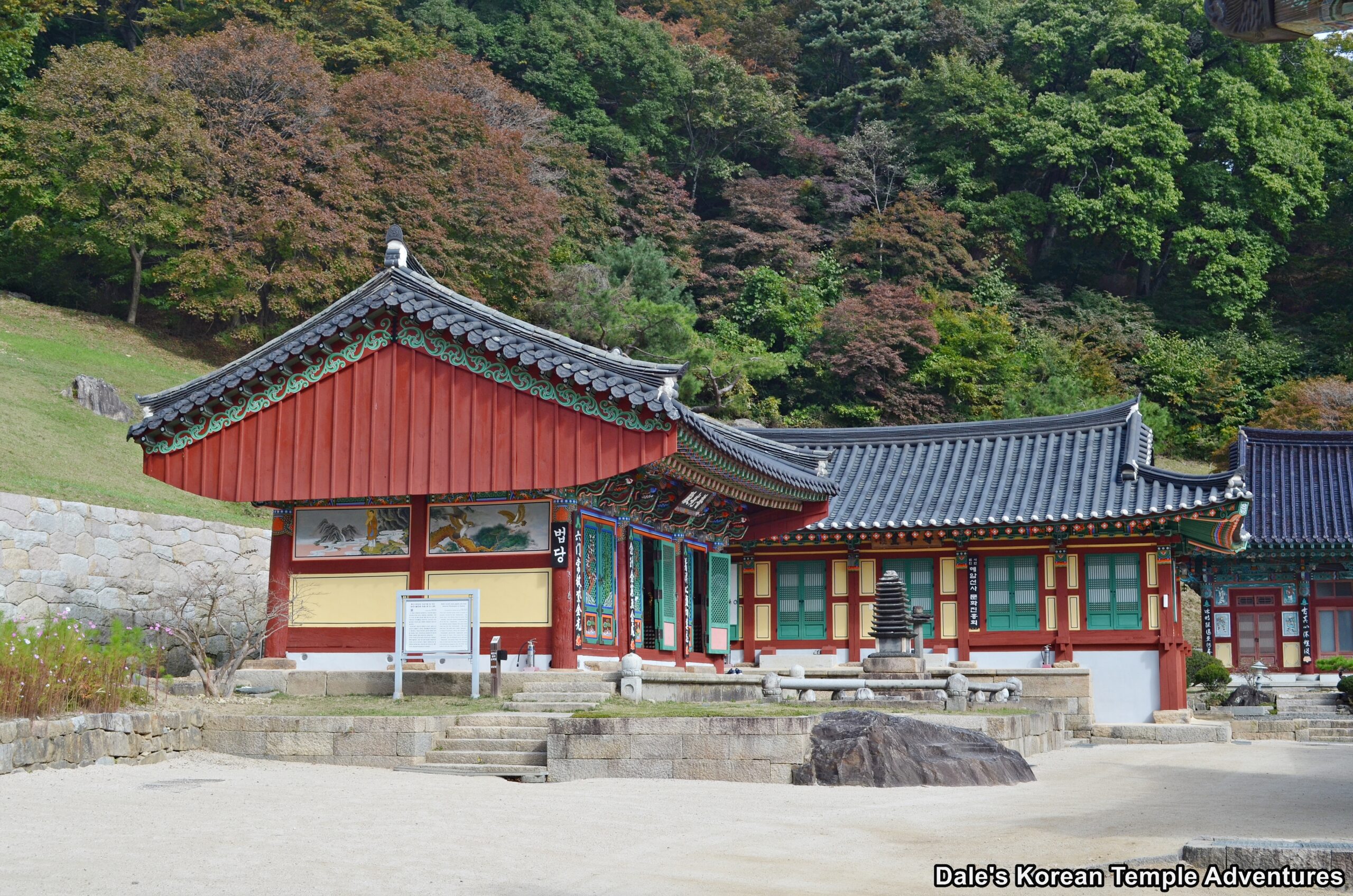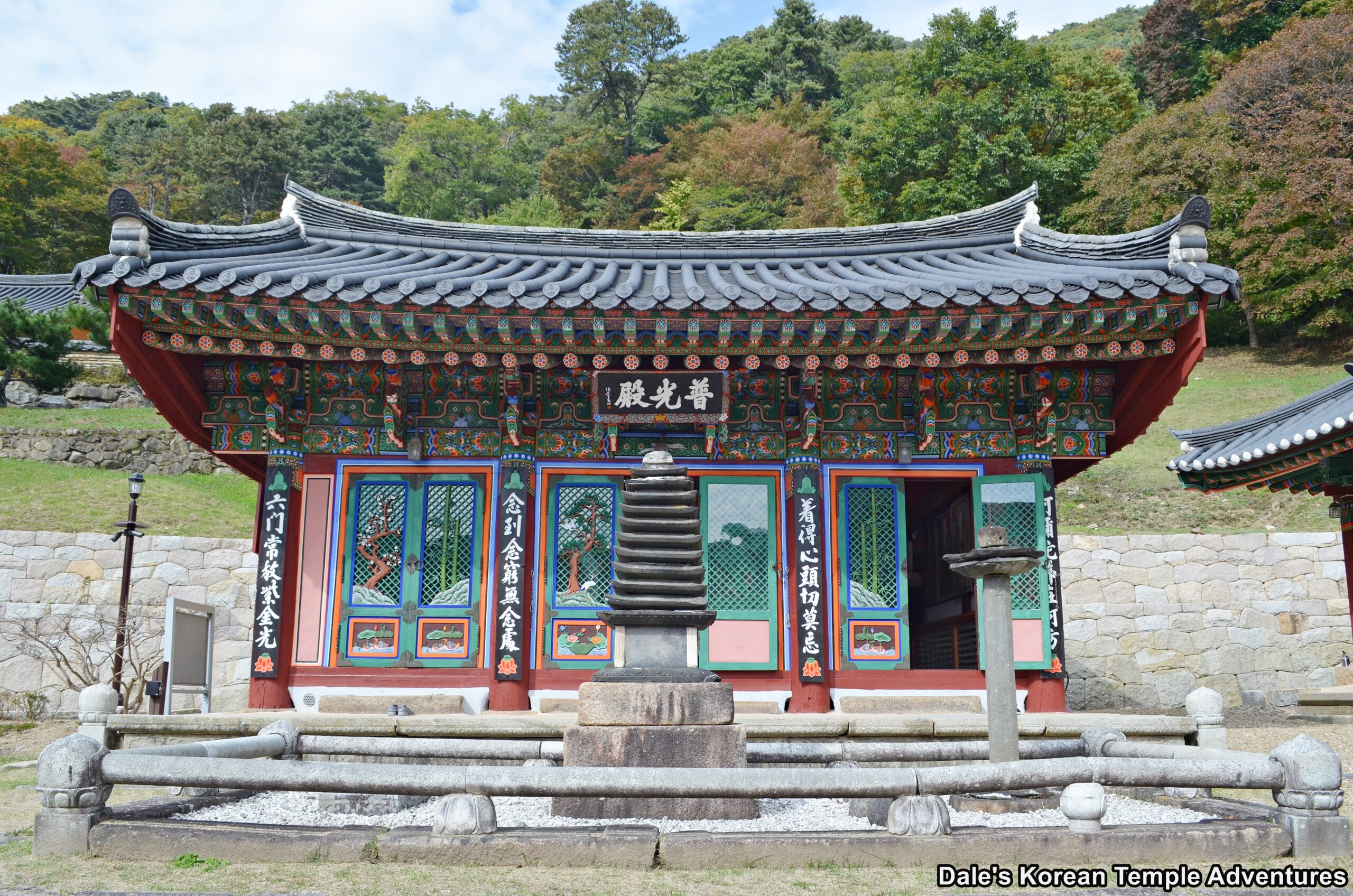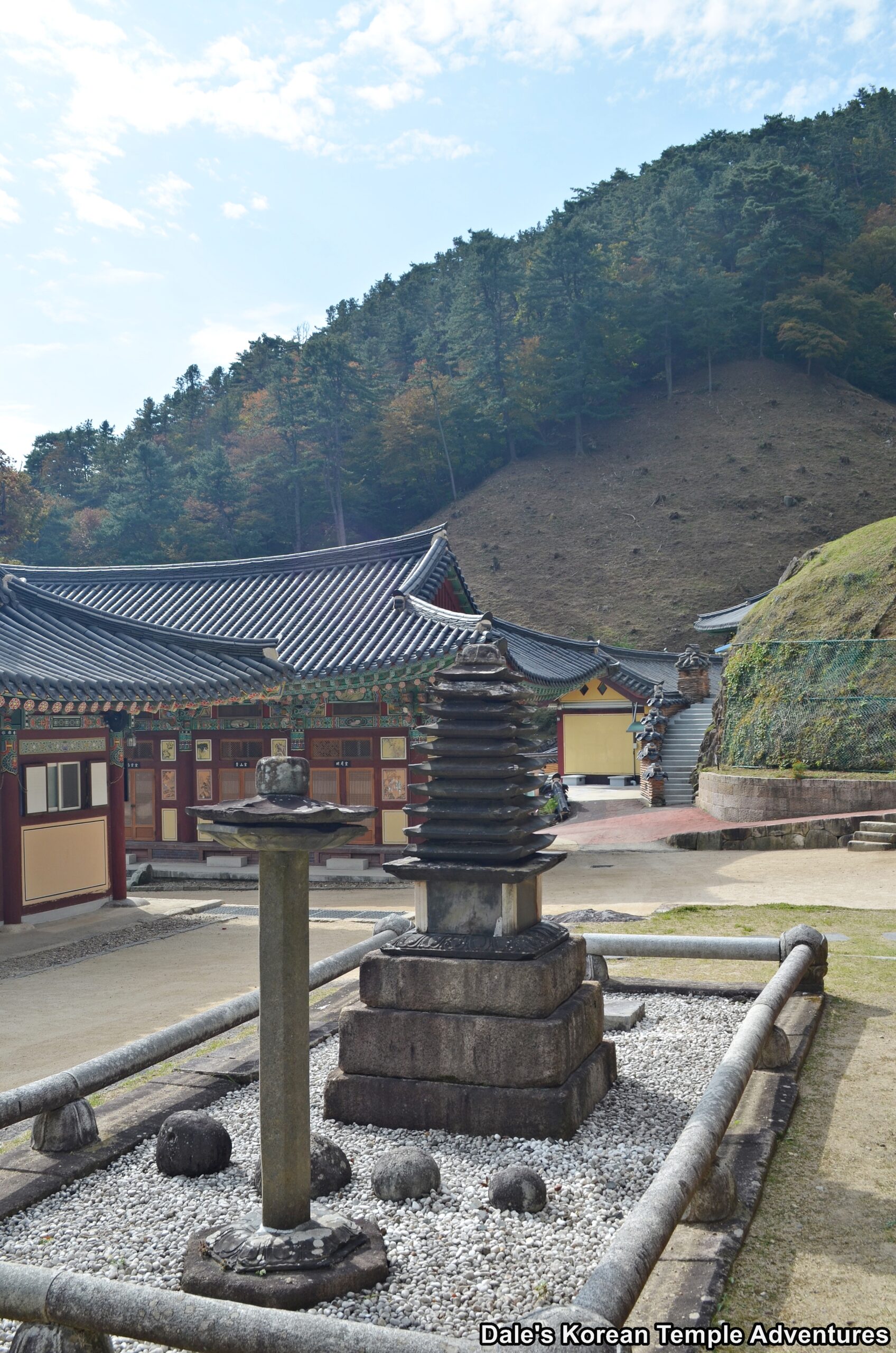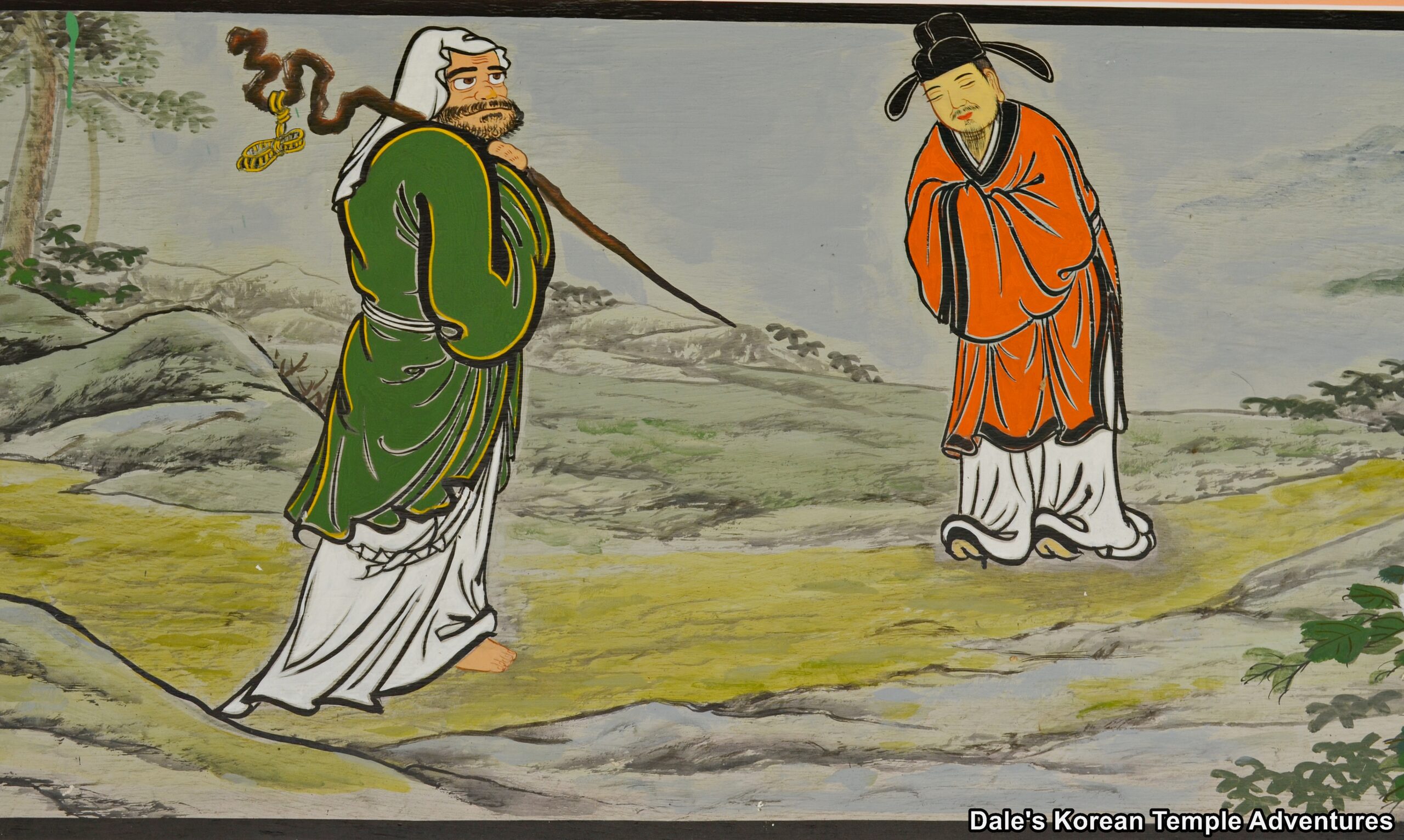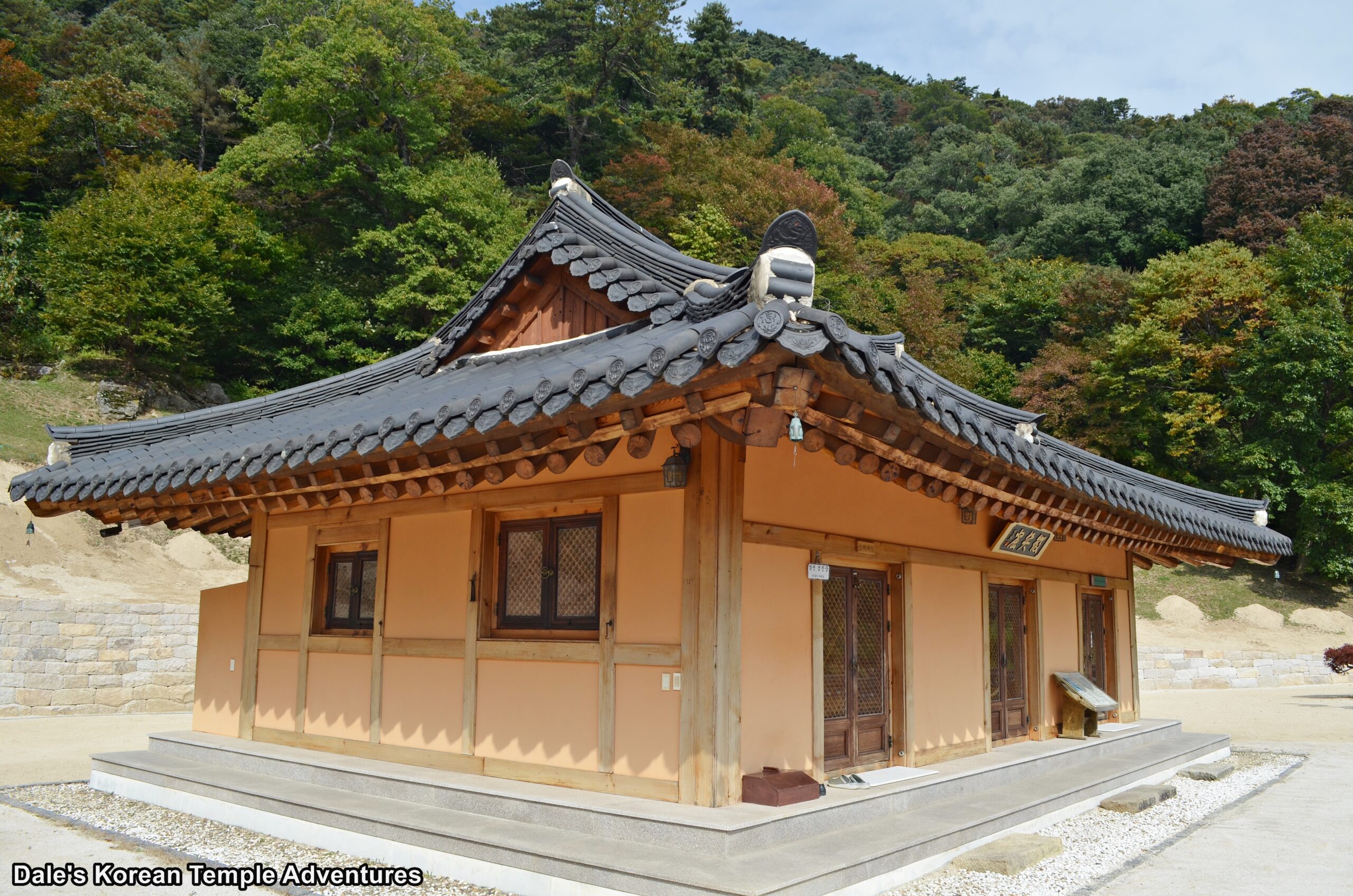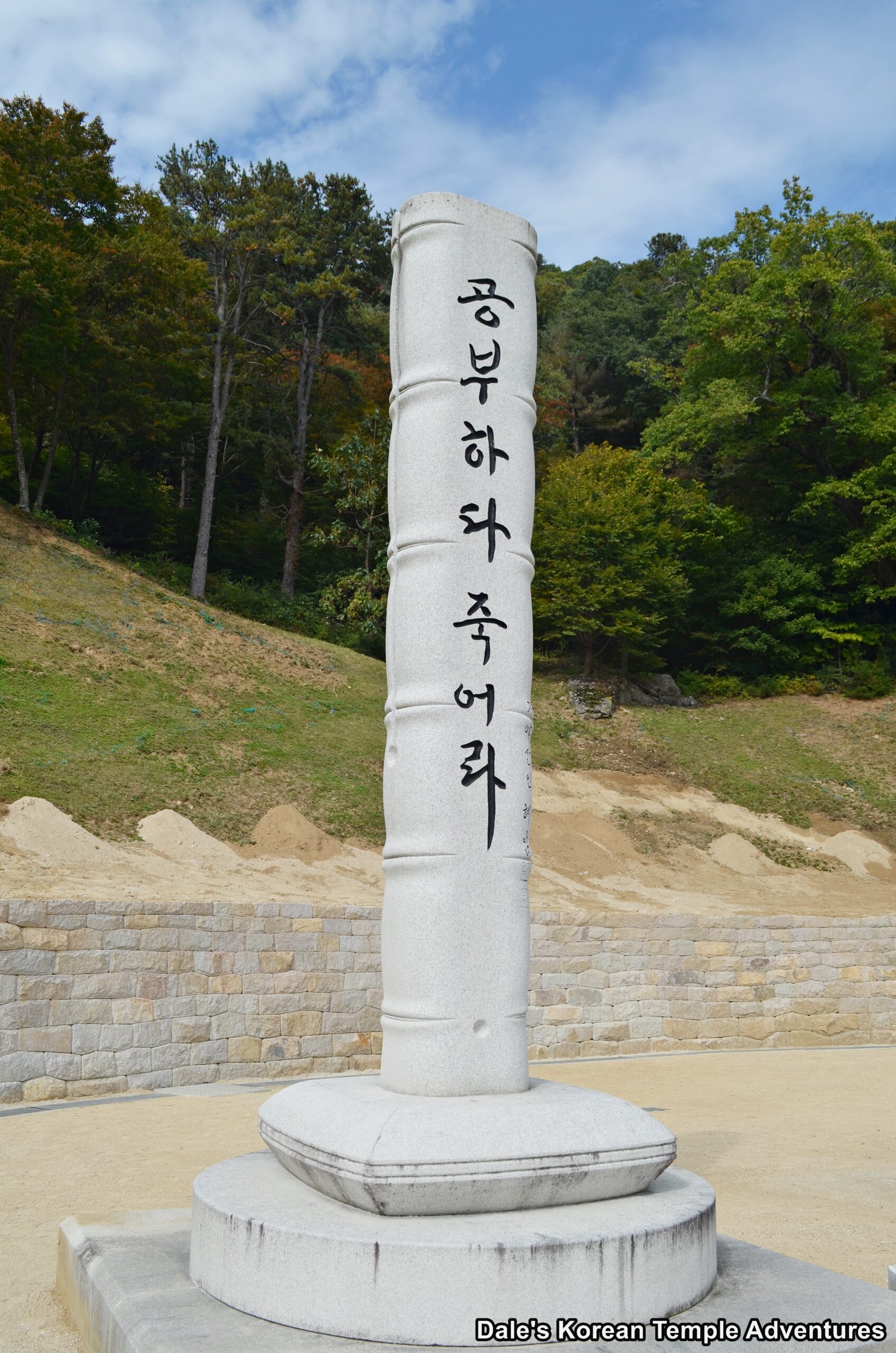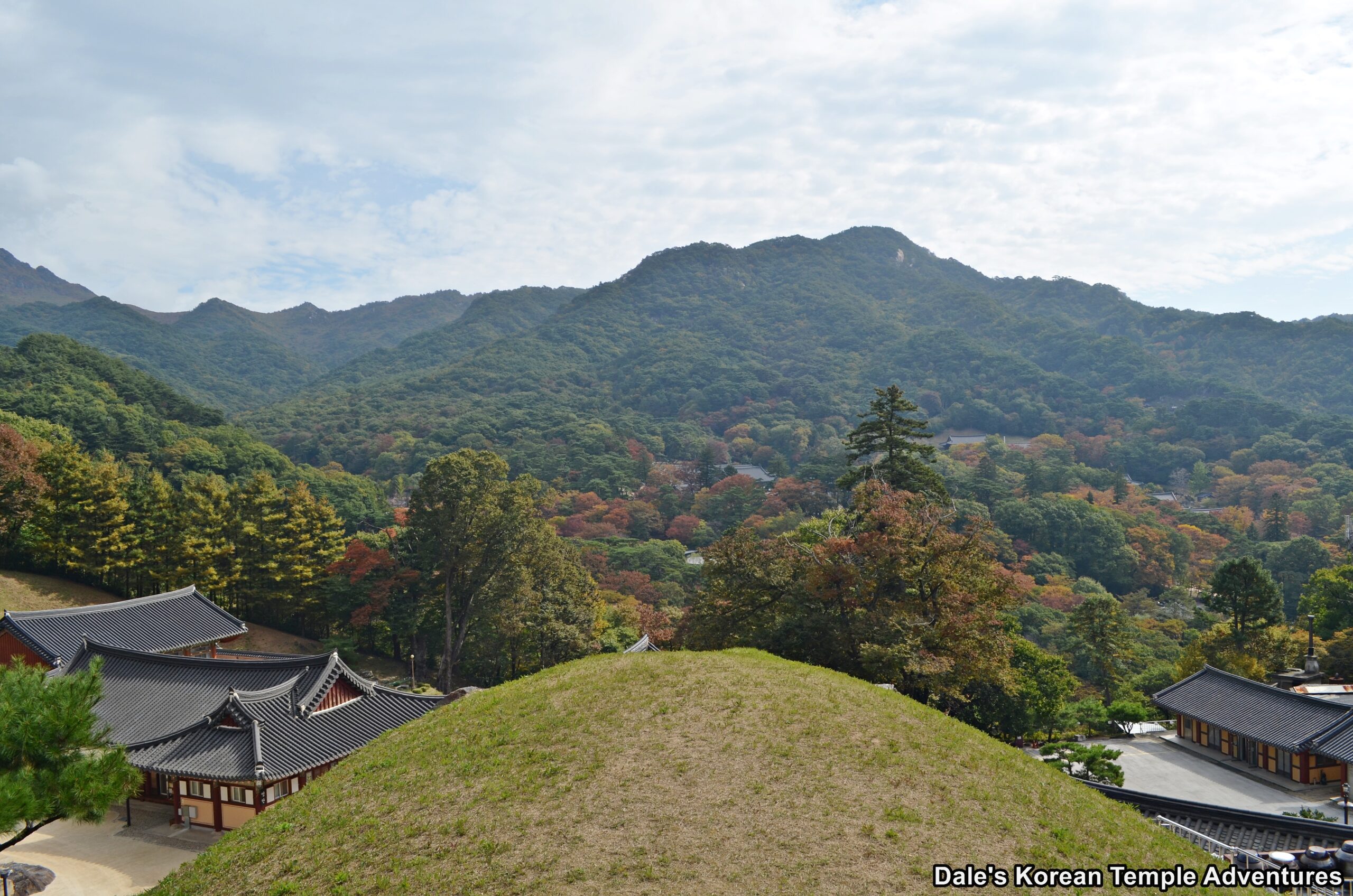Wondangam Hermitage – 원당암 (Hapcheon, Gyeongsangnam-do)
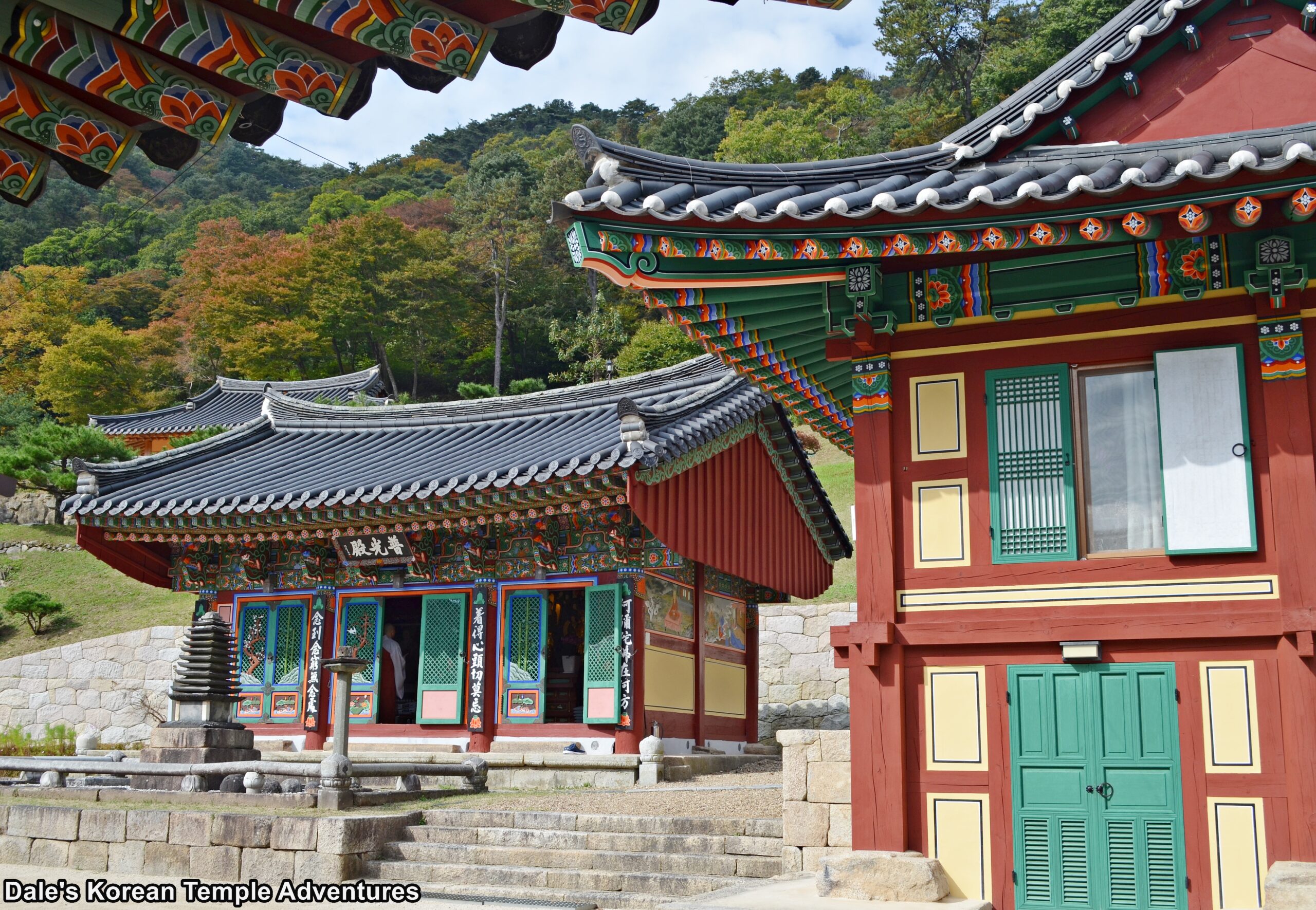
Hermitage History
Wondangam Hermitage is located on the Haeinsa Temple grounds in Hapcheon, Gyeongsangnam-do across the bridge from Hongjeam Hermitage. The hermitage was first built as a staging site to build neighbouring Haeinsa Temple in 802 A.D. Additionally, the hermitage has a royal connection.
According to one legend, the two founding monks of Haeinsa Temple, Suneung and Ijeong, who were disciples of Uisang-daesa (625-702 A.D.), helped heal the wife of King Aejang of Silla (r. 800 – 809 A.D.). Additionally, it’s believed that these two monks were royal descendants of Daegaya. Suneung and Ijeong studied Esoteric Buddhism, or Chongji-jong in Korean, while in Tang China (618–690, 705–907 A.D.). Purportedly, the wife of King Aejang of Silla had a tumour. The monks tied a piece of silk thread around the tumour and attached it to a neighbouring tree. They then chanted Esoteric Buddhist verses, or jin-eun in Korean, that they had learned in Tang China. Miraculously, and through these Buddhist chants, the tumour vanished, while the tree withered and eventually died. Grateful, King Aejang of Silla (r. 800-809 A.D.) granted the two monks funding that they would need to build a new temple wherever they wanted it. Surprisingly, the two monks chose to construct their new temple in the remote mountainscape of Mt. Gayasan.
According to another legend connected to Haeinsa Temple, and through Choe Chiwon (857–10th century), who states in 900 A.D., that Suneung and Ijeong gained support for the construction of the temple through a queen dowager who had converted to Buddhism. With this support, the two monks were able to gain financing to construct Haeinsa Temple.
And it’s through these two legends that King Aejang of Silla purportedly stayed at Wondangam Hermitage to oversee the construction of Haeinsa Temple.
Through the years, and during the reign of King Sejo of Joseon (r. 1455-1468), the monk Hakjo-hwasang (1432-1514) stayed at Wondangam Hermitage for a prolonged period of time. Additionally, the hermitage underwent some renovations in 1495. Later, and in 1852, the hermitage was reconstructed by the monk Uryong. And in 1874, the hermitage was reconstructed, once more; but this time, by the abbot Haeun. More recently, Wondangam Hermitage was rebuilt and reconstructed by the monk Hyeam (1920-2001), who would become the Supreme Patriarch of the Jogye-jong Order in April, 1999.
In total, Wondangam Hermitage is home to two Korean Treasures with a third being housed at the Haeinsa Seongbo Museum. The two that are housed at Wondangam Hermitage are the “Multi-Story Stone Pagoda and Stone Lantern at Wondangam Hermitage of Haeinsa Temple,” which is Korean Treasure #518; and the other is the “Wooden Amitabha Buddha Triad and Excavated Relics of Wondangam Hermitage,” which is Korean Treasure #2072. As for the third housed at the Haeinsa Seongbo Museum, it’s the “Wooden Amitabha Buddha Triad and Excavated Relics of Wondangam Hermitage, Haeinsa Temple, Hapcheon – Dharhani Sutra,” which is Korean Treasure #2075.
Hermitage Layout
Most of the hermitage grounds are off-limits to the general public. From the hermitage parking lot, you’ll notice several buildings to your left. These include the monks’ dorms, the kitchen, and the public bathrooms. To the right of the hermitage parking lot, you’ll notice another collection of buildings.
Making your way to the right, you’ll pass through two buildings that are monks dorms. On the other side of these buildings is the main hall at Wondangam Hermitage. It’s also the only shrine hall at the hermitage open to the public. This is the Geukrak-jeon Hall.
Out in front of the Geukrak-jeon Hall stands the “Multi-Story Stone Pagoda and Stone Lantern at Wondangam Hermitage of Haeinsa Temple.” This style of pagoda is rather atypical, as it’s made of clay-slate stone. This type of stone is more commonly used to make ink-stones than it is to make a pagoda. The foundation of the pagoda consists of three-layered granite. On top of this foundation rests the main body of the pagoda which are solely roof stones. The roof stones are made of the clay-slate stones. The bottom portion of the single layered platform that the body rests upon is engraved with lotus flower patterns, while the four corners of the upper part of the platform are made of marble pillars. Sadly, the core body stones that separated the roof stones are now missing and only the 10 stories of the roof stones still remain. These roof stones are both slim and horizontal. Of the upper portion of the pagoda, only the base to the finial still remains. This finial base is made of granite, and it resembles an upturned bowl. This style of pagoda was mostly popular during the Goryeo Dynasty (918-1392). The “Multi-Story Stone Pagoda and Stone Lantern at Wondangam Hermitage of Haeinsa Temple” is believed to be one of the earliest forms of this style of pagoda still in existence in Korea. It’s believed to date back to the end of the Silla Dynasty (57 B.C. – 935 A.D.).
Another aspect of the “Multi-Story Stone Pagoda and Stone Lantern at Wondangam Hermitage of Haeinsa Temple” is the rather unassuming stone lantern that stands next to the historic pagoda. Both were built around the same time at the end of the Silla Dynasty. One key feature that kind of makes the stone lantern not look like a stone lantern is that the entire light chamber is currently missing. The stone lantern, as it presently stands, consists of a hexagonal foundation stone, a lower base, a middle base, and a roof stone. The lower base and roof stone are made of clay-slate stones, while the other parts of the stone pagoda are made of granite. And interesting feature to the stone lantern is the middle base, which is both long and slim. The interesting feature is that the middle base is inscribed with the Chinese characters, 上 (sang, meaning “up”) and 下 (ha, meaning “down”). Together, they are Korean Treasure #518.
Behind these two stone artifacts stands the hermitage’s main hall, the Geukrak-jeon Hall. The exterior walls to the Geukrak-jeon Hall are adorned with various murals including one of Podae-hwasang (The Hempen Bag), idyllic murals, what appears to be two hawks, and the Bodhidharma meeting a royal-looking official. Stepping inside the main hall, you’ll notice the “Wooden Amitabha Buddha Triad and Excavated Relics of Wondangam Hermitage” resting on the main altar. The triad consists of a central image dedicated to Amita-bul (The Buddha of the Western Paradise), who is joined on either side by Jijang-bosal (The Bodhisattva of the Afterlife) and Gwanseeum-bosal (The Bodhisattva of Compassion). This triad was popular at the end of the Goryeo Dynasty (918-1392) and lasted until the end of the Joseon Dynasty (1392-1910). It’s believed that this triad, the “Wooden Amitabha Buddha Triad and Excavated Relics of Wondangam Hermitage” dates back to the late 15th century. There are a few reasons for this. The first is that there was a letter of prayer found inside the statue. Another is that Haeinsa Temple was remodeled under royal patronage in 1490. And lastly, Wondangam Hermitage was remodeled in 1495.
As for the appearance of the triad, all three statues have round faces. Their facial features are quite detailed. The Amita-bul statue makes a mudra (ritualized hand gesture) with it’s delicate fingers. Gwanseeum-bosal is adorned with an ornate crown. And Jijang-bosal stands with green hair and a serene face. As for the lotus pedestal that each of the statues rests upon, they are both upward and downward facing lotus flowers. This is an influence of Tibet Buddhism at this time. This reveals the active influence and exchange that took place between Chinese Buddhism and Korean Buddhism at this time. It appears, based on style, that all three statues were created by the same monk artist. Another great example of this triad from a similar time frame is the “Seated Amitabha Buddha Triad of Muwisa Temple.” “Wooden Amitabha Buddha Triad and Excavated Relics of Wondangam Hermitage” is Korean Treasure #2072.
To the right of the Geukrak-jeon Hall are another collection of monks’ dorms. It’s to the rear of the main hall that you’ll find a set of stairs. These stairs lead up to the former residence of the monk Hyeam. To the left of this residence is a large stone bamboo stick which instills a sense of discipline. It’s also in this area that you’ll find a look-out that looks out towards Haeinsa Temple. You get a beautiful view of the main temple and the mountains that surround it.
How To Get There
To get to Wondangam Hermitage, you’ll first need to get to Haeinsa Temple. From the Hapcheon Intercity Bus Terminal, you’ll need to board a bus bound for Haeinsa Temple. The bus ride is about 5,000 won. From where the bus lets you off at Haeinsa Temple, you’ll need to find the trail that leads up to Haeinsa Temple. The walk is about one kilometre, and the trail starts to the left of the Haeinsa Temple museum. Arriving at Haeinsa Temple, and standing next to the Iljumun Gate, you’ll need to continue onward to your left. Head towards the neighbouring parking lot and cross over the narrow stone bridge. But before getting to Hongjeam Hermitge, hang a left and head towards the hermitage on the hillside. This is Wondangam Hermitage. The trip from the Iljumun Gate to Wondangam Hermitage will take about 10 minutes, or 400 metres.
Overall Rating: 4/10
There’s not a ton to see at Wondangam Hermitage, but what you can see is beautiful. The artwork around the Geukrak-jeon Hall is nice, and the “Wooden Amitabha Buddha Triad and Excavated Relics of Wondangam Hermitage” is stunning. As for outside the Geukrak-jeon Hall, have a look at the highly original “Multi-Story Stone Pagoda and Stone Lantern at Wondangam Hermitage of Haeinsa Temple.” You can also enjoy a view of Haeinsa Temple off in the distance from the heights of Wondangam Hermitage.

